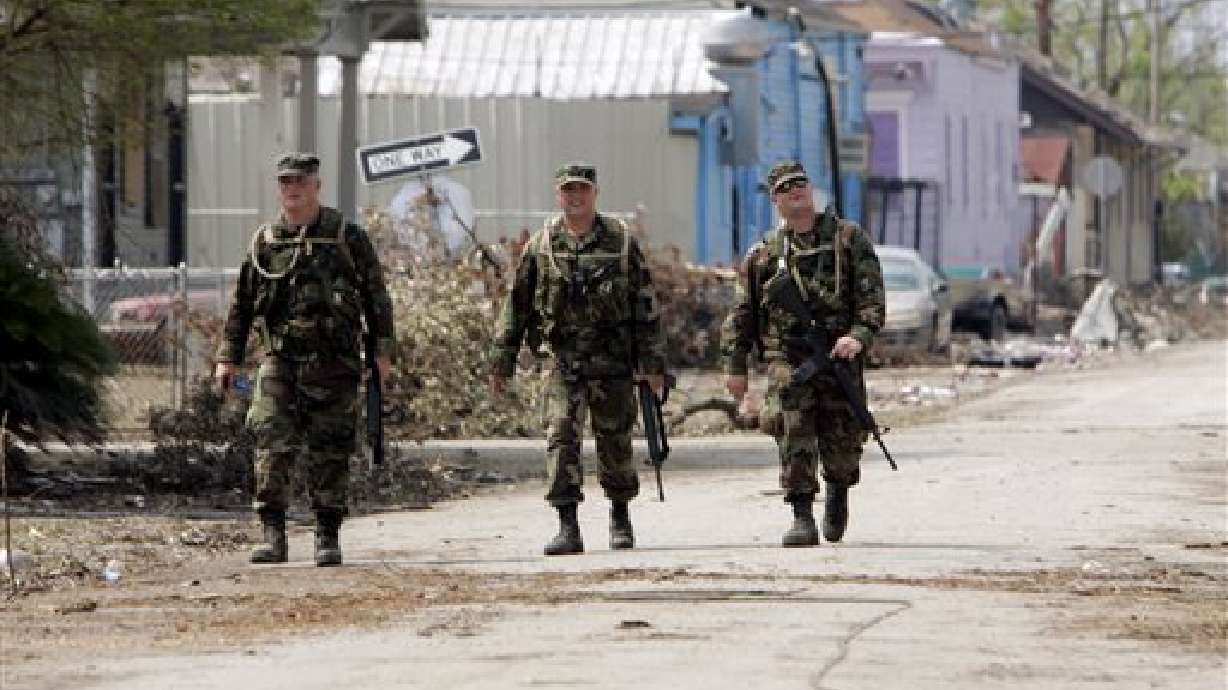Estimated read time: 3-4 minutes
This archived news story is available only for your personal, non-commercial use. Information in the story may be outdated or superseded by additional information. Reading or replaying the story in its archived form does not constitute a republication of the story.
BATON ROUGE, La. (AP) -- A weakened levee system and a lack of drinkable tap water will make it "extremely problematic" to follow the New Orleans mayor's timeline for allowing residents to return to the evacuated city, the head of the federal disaster relief effort said Saturday.
Coast Guard Vice Adm. Thad Allen said federal officials have worked with Mayor Ray Nagin and support his vision for repopulating the city, but he called Nagin's idea to return up to 180,000 people to New Orleans in the next week both "extremely ambitious" and "extremely problematic."
"Our intention is to work with the mayor ... in a very frank, open and unvarnished manner," Allen told The Associated Press in an interview at Department of Homeland Security headquarters in Baton Rouge.
Allen called on the mayor to be "mindful of the risks" and said he would inform Nagin of his concerns at a meeting set for Monday.
Nagin defended his plan in a statement issued late Saturday, saying it was developed in cooperation with the federal government and "properly balances safety concerns and the needs of our citizens to begin rebuilding their lives."
The prime concern, Allen said, was the risk of another storm hitting the region, threatening an already delicate levee system and possibly requiring residents to be evacuated again. Hurricane season ends Nov. 30, though peak storm activity typically occurs from the end of August through mid-September.
"You want to have some way to conduct evacuation, because something less than a Category 4 storm is going to present significant issues that might require the evacuation of the general population," he said. "You want to make sure you have your arms around how you will do that, or if you could do it."
The U.S. Army Corps of Engineers has said the levees, in their current state, would probably not protect the city from the storm surge of a category 3 hurricane.
One New Orleans levee broke Aug. 29, the day Category 4 Hurricane Katrina hit, letting flood water pour into the city. Another floodwall was breached the next day, leaving 80 percent of the city flooded, leading to mass evacuations and lawlessness. As of Friday, the death toll in Louisiana was 579.
Allen declined to give even a rough estimate of the total number of dead in New Orleans, saying that many homes remain underwater and searchers have not been able to enter them. Also, evacuees have been so widely dispersed that accounting for them will be difficult, he said.
"I don't think you'll see any person involved in this effort right now is going to hazard a guess on that because there's just no way to know," Allen said.
Tap water is another prime public health concern, he said, because it remains unfit for drinking and bathing in most of the city. Allen said he was concerned about the difficulties of communicating that risk to people who return and might run out of the bottled water they brought along.
"The water that's there is only good for firefighting and flushing," he said.
Allen said another concern for returning residents is the flood water that remains on the streets and in houses, the residue of which remains throughout flooded areas that are now dry and is also a health threat. Allen said troops undergo decontamination after they are done working in the water.
"They are decontaminating themselves as they would if they were operating in a toxic environment," he said.
Allen took over the federal recovery effort after Mike Brown, then the head of the Federal Emergency Management Agency, was sent back to Washington. Brown resigned three days later, under heavy criticism that the disaster agency had reacted too slowly in the aftermath of Katrina.
Associated Press Writer Michael Rubinkam contributed to this report from Baton Rouge.
(Copyright 2005 by The Associated Press. All Rights Reserved.)









